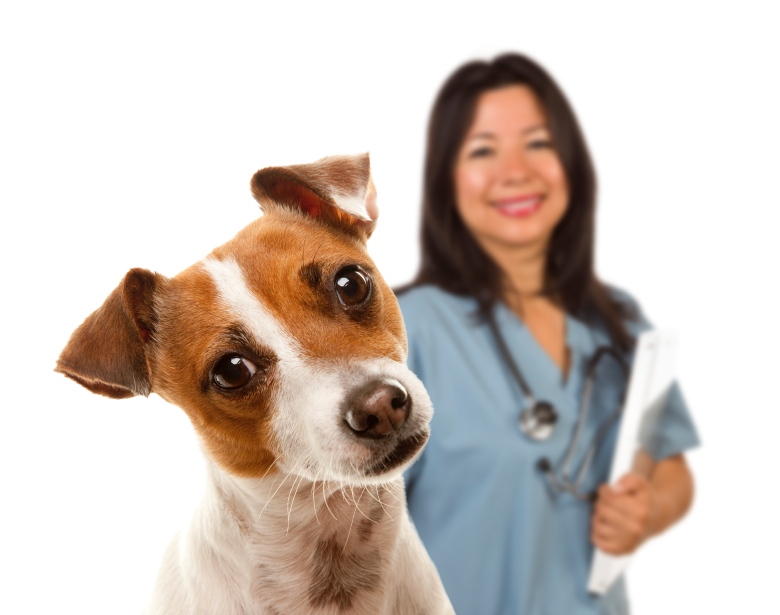The vet can be scary places for dogs. The bright lights, odd smells, sounds of dogs whining in the kennels and even your own nerves can all cause your dog to go on high-alert. Not every dog is super comfortable being at the vet, never mind being handled for basic procedures.
Here are three easy training tips to ensure your vet visits go a little more smoothly.
Putting on and Wearing a Muzzle
A muzzle does not mean your dog is bad or dangerous, it is merely a safety precaution to prevent a scared or injured dog from biting the person during the exam.
.Teach your dog to willingly participate by putting his nose into the muzzle. Help him get used to wearing it for a few minutes, starting in small increments.
Sitting on the Scale
In order to be properly weighed, dogs need to have all four paws on the scale, stay there for a few seconds and can’t be leaning on a person or supported by a leash.
Wrestling a dog, whether large or small, onto an odd surface and expecting him to stay still is quite a challenge. Why not train your dog to do it all himself?
To teach this, start by teaching a “go to your mat” behavior. Your dog will learn to go to the mat when asked, and to either stand, sit or lay down. All poses are okay as long as the dog stays on the mat.
Start practicing with a smaller mat, about the size of a Tupperware lid. This mobile-friendly mat can be easily added to the vet scale for a few practice sessions. Eventually, you can work on sending your dog to the scale without a mat at all.

Targeting for Low-Stress Exams
One of the best tools in your training arsenal is the nose target. Your dog learns to not only touch the target with his nose but to also keep his nose on it until released. While the dog is eagerly focusing on the target, you and the treat, a vet can administer vaccinations, listen to his heartbeat or do a hands-on examination. This is ideal for virtually any dog, but particularly for dogs who aren’t overly fond of being hugged by a strange vet tech.
The key is, of course, to start in small steps. At first, your dog will only touch the target with his nose for the briefest period of time, but you can gradually increase the amount of time he holds his nose to the target. In the beginning, click and treat for any nose touches, and when your dog gets the idea, wait to click and treat until your dog presses his nose very firmly onto the target. Most dogs do this naturally after you fail to click and treat; it’s like they are making it extra obvious that they are touching the target! This is exactly what you want. Keep slowly progressing the time limit, and then get a friend to help add in distractions. Your dog should keep his nose pressed to the target even if someone is rubbing his back, for example.
I hope these 3 tips, brought to you with input from Mad Paws, prove helpful in making your dog’s next trip to the vet enjoyable and carefree.

